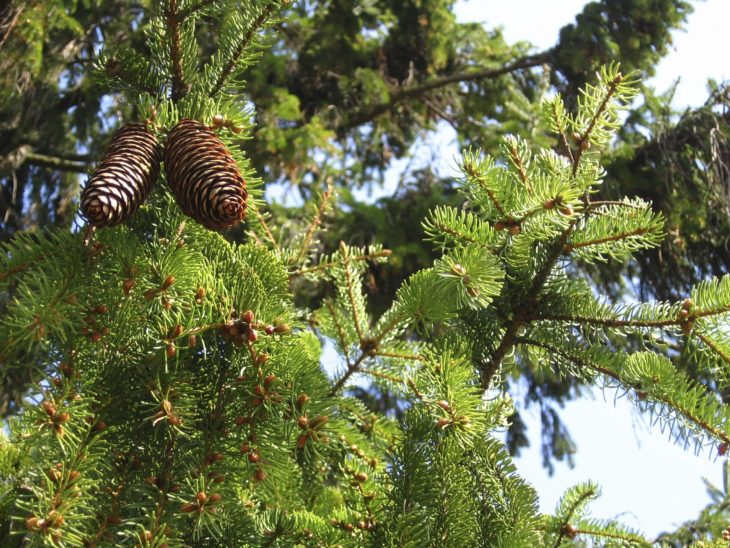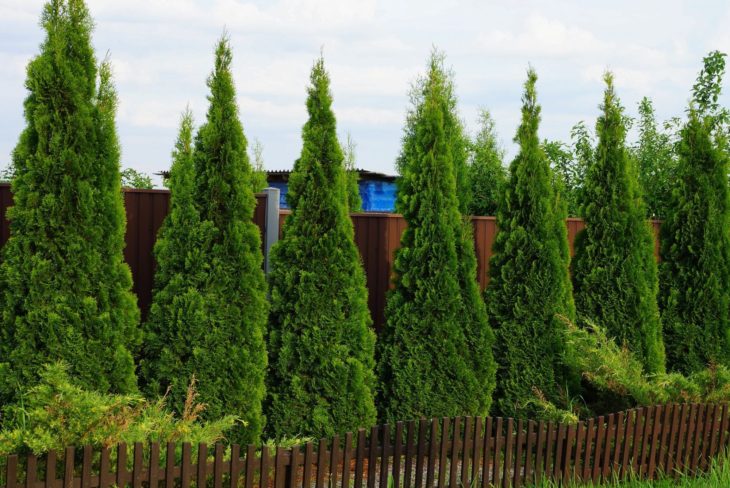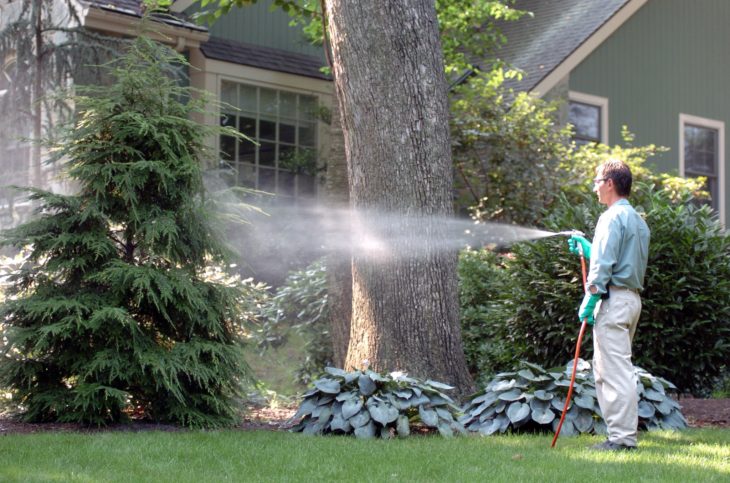Evergreen Trees provide texture and color all year long. From privacy screens, hedges, windbreaks, and sound barriers to specimens and group plantings, evergreen trees are versatile in the home landscape. These trees add visual appeal in an otherwise dull winter landscape.
Evergreens tend to be low maintenance and often perform well in poor soils. They slowly process nutrients all year and even create an optimal environment for themselves. Evergreen trees gradually shed their foliage to create the acidic soil they enjoy.
Contents
Types of Evergreen Trees
Conifers
This is the group most commonly thought of when referencing Evergreen Trees. These trees are gymnosperms (seed-producing plants) that bear cones. Think Christmas trees. Fir, Pine, Hemlock, Cypress, Spruce, Redwood, Yew and Arborvitae/Thuja are coniferous trees. Many trees in this group have needles, but others like Cypress and Thuja have soft sprays of foliage.
Broadleaf
Broadleaf evergreen trees have green leaves all year long. These trees tend to prefer warmer climates and are often called Temperate Broadleaf or Temperate Climate Broadleaf trees. Some of the trees in this group include Holly, Magnolia, Wax Myrtle, and Live Oak.

Source: gardeningknowhow
How to Plant Evergreen Trees
Make sure the tree grows well in your growing zone. According to plantingtree.com, most Evergreen Trees prefer full sun and can adapt to just about any well-drained soil, but it is important to do a little research to be sure you have the right environment for the tree you choose.
Dig a hole at least twice as wide and about as deep as the root ball of your Evergreen Tree.
Place your tree level in the hole. The root ball should be slightly above your soil line. Avoid planting too deep, this can kill your tree.
Fill the hole with water. New trees like a lot of water. This helps them establish properly and quickly.
Backfill the soil and tamp it down to remove air pockets. Do not stomp on the ground because it can compact the soil and make it harder for your tree to get established.
Mulch your Evergreen tree with 1 to 2 inches of mulch extended at least a few inches past the tree canopy. Mulch helps the ground retain moisture and keeps weeds away.
Water again until the water begins pooling on the soil surface.
How to Care for Evergreen Trees
Water
Prior to establishment, water deeply at the base of the tree at least twice a week for the first month and once weekly for the 2nd and 3rd months. Water once weekly during the first summer, especially if you are in the south or any hot climate. Cold, dry climates can actually help protect your Evergreen Trees by a once-weekly watering throughout winter. This can prevent some of the bronzing and discoloration as well as the desiccation that is often seen on evergreen foliage in late winter.

Source: arbordayblog
Soil and Mulch
Evergreen Trees do enjoy acidic soil which they often create naturally over time. If needed, especially early on, you can acidify your soil with Elemental Sulfur. Using pine straw or pine bark mulch can help add acidity to your soil over time.
Food
Some Evergreen Trees love fertilizer and others don’t need it. So back to that research you did on your chosen trees for this piece of the puzzle. You can pretty safely use a balanced, slow-release fertilizer each spring especially on those fast-growing Evergreen Trees. But if you have decent soil and your tree is growing well you can certainly skip the fertilizer.

Source: lawnpros
Pruning
There are no Evergreen Trees that require pruning. In fact, certain types of pruning, like topping, can forever change the shape of your tree which is fine if you are creating a hedge. Otherwise, avoid this type of pruning. The best time to prune most Evergreen Trees is in early spring.
Now you know How to Care for Evergreen Trees! Fortunately, they require minimal care once established. These easy to grow trees offer year-round appeal and beauty. You can choose conifer or broadleaf evergreen trees from big to small to you create just about any look you desire. Evergreen Trees are great plants for any landscape.
